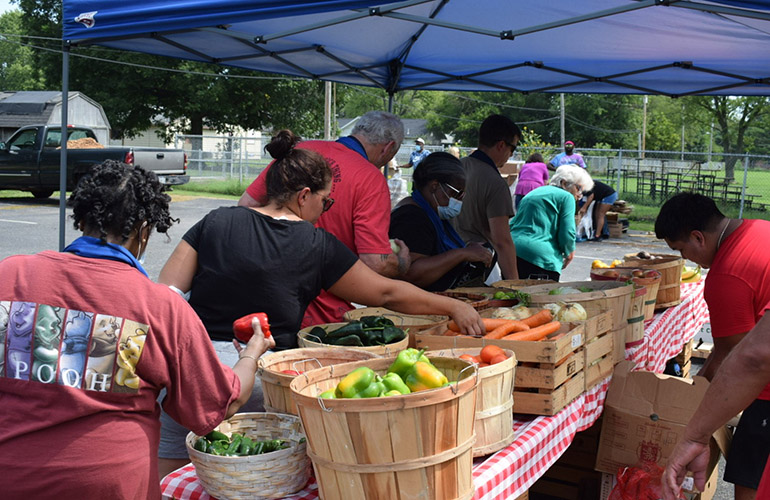Food insecurity persists even as the economy rebounds from the downturn caused by the COVID-19 pandemic. More than 42 million people nationwide may have trouble accessing food to feed their families.
In New Mexico, Sonya Warwick, director of communications and events at the Albuquerque-based Roadrunner Food Bank, has collected some heartbreaking stories to bring awareness to the hunger problem in her state, which struggles to feed its 2 million residents.
“My husband is unemployed, and we do get Social Security,” a food bank client says. “It’s such a small income. (The food bank) does help supplement what we can afford to buy at the store. Our medications are necessary, but expensive, and we are struggling to keep up with paying utilities and our mortgage right now.”
Even before the pandemic, every community in the United States was home to families facing food insecurity. The national public health crisis exacerbated the problem. In 2020, more than 60 million people sought help from food banks and community partners.
Health Care Services Corporation (HCSC) and its plans in Illinois, Montana, New Mexico, Oklahoma and Texas have a longstanding commitment to investing in food banks in their states and supporting sustainable resources and strategies to combat hunger and improve health.
Those food banks, with help from the national hunger-relief organization Feeding America, buy nutritious and culturally appropriate foods for communities they serve. They also are developing and implementing policies focused on finding a larger variety of nutritious foods needed to help prevent diet-related conditions that can compromise its clients’ health.
“We know that economic stability and food security have a significant impact on health outcomes,” says Clarita Santos, HCSC’s executive director for corporate and civic partnerships. “Our partnership with Feeding America is designed to fight hunger and improve nutrition for families throughout Illinois, Montana, New Mexico, Oklahoma and Texas addressing a critical health and social issue facing our states.”
In 2020, almost 11% of American households had trouble feeding all family members, according to a U.S. Department of Agriculture report. Meantime, existing gaps between white households and those of people of color expanded, with nearly 22% of Black households experiencing food insecurity, compared with a little more than 7% of white households. More than 17% of Hispanic households had trouble accessing food.
That struggle to feed themselves and their families puts people at risk for a lifetime of poor health outcomes and disparities. Research shows food insecurity can lead to hypertension, stroke, cancer, diabetes, chronic obstructive pulmonary disease and kidney disease.
“When someone has food insecurity, they're oftentimes dealing with trade-offs with food and other basic needs or engaging in coping strategies such as eating fewer meals or watering down their meals,” says Jessica Hager, Feeding America’s director of health care partnerships and nutrition.
Those trade-offs can lead to developmental delays and behavioral issues for children and disease management problems for adults with diabetes and other health conditions, Hager says.
A focus on nutrition and culture
This year HCSC invested $1 million in Feeding America’s work focusing on closing nutritional gaps, addressing health disparities and creating culturally competent connections with food bank clients. Twenty-six food banks are carrying out this work with Feeding America grants supported by HCSC plans in Illinois, Montana, New Mexico, Oklahoma and Texas.
The projects include surveying and engaging their communities to understand their food needs and cultural preferences, while building trust with the people they serve and working to provide communities with a better balance of nutritious foods.
“This goes beyond food categories of protein, dairy and produce, but really what are the specific ingredients that are traditional or special in one's culture,” Hager says. “We know that in the United States there's such great diversity in our food and the cultures that are represented, and we as a food bank network want to be able to meet those food needs and preferences.”


